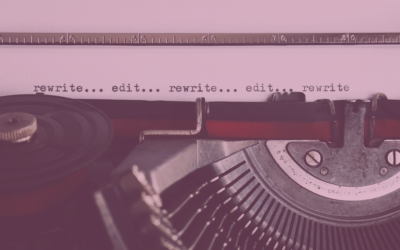Nowadays, any successful business needs to maintain its online presence. Above all, you must ensure that potential customers can find your business online so that they can shop, access services, leave feedback, and interact with your sales team.
You can attract customers by using paid ads, but many online consumers find businesses by using search engines to look for what they need. In fact, within the last several years it has been found that organic search delivers up to 53% of all website traffic, and it drives real business results for brands, businesses, and organizations of all sizes.
In order to achieve these results for your business, however, you need to improve your website’s search engine optimization (SEO).
SEO improves your visibility on search engines like Google, making it easier to attract website visitors who will become customers, clients, or return readers. Additionally, focusing on SEO is a cost-effective way to help small- and medium-sized businesses compete with larger companies.
Good SEO happens when you design your website to fulfill users’ search needs through a good website user experience and high-quality content. In this way, SEO also helps build trust and credibility with your audience.
In short, SEO content is crucial for the success of your website. In this article, we will share some tips on how to write SEO content for your website that will help you rank high in search engines.
Use Keywords
The first step in writing good SEO content should always be to use keywords. Keywords are the backbone of SEO. They help search engines understand what your content is about and how to categorize it, which is the only way you can stand out and be heard.
To use keywords effectively, first, research the keywords that your target audience uses to find your content. You can use recommended tools like Google AdWords Keyword Planner, Moz Keyword Explorer, or Ahrefs Keyword Explorer to find relevant keywords. You’ll want to include the keywords that are commonly used by casual searchers — but to give yourself an edge, you’ll also want to target what are called “long-tail keywords.”
Long-tail keywords are longer, more specific keyword phrases that are more likely to be used by visitors to your website who are already closer to making a purchase. For example, instead of “yoga classes,” or “best cat food,” a long-tail keyword would be “affordable yoga classes for beginners in San Francisco” or “best cat food for cats with thyroid problems.”
Long-tail keywords have lower search volumes than short keywords but they can be hugely valuable when used correctly because they attract visitors who are more committed. These keywords are also less competitive and easier for your business to rank for.
Once you have the right keywords, use them in your title, headers, meta descriptions, and throughout your content. You’ll need to avoid overusing your keywords, however. Using them too often — known as “keyword stuffing” — can harm your rankings and make your content feel spammy.
Instead, use your keywords naturally and strategically within your content, and remember to include variations of the keywords as well — use different keywords to say the same thing. Above all, remember to write for your audience first and for search engines second — when you do, the keywords should follow naturally.
Be Intentional In Your Writing
Good SEO content is not only about using keywords but also about being intentional in your writing. You need to write content that will be valuable to your readers — something that informs them, inspires them, or helps them solve their problems. Your content should ideally also be engaging and easy to read.
To create good SEO content, start by developing a content strategy that aligns with your business goals. Your content should be tailored to your audience and share the message that you want to get across — be ready to revise and rewrite your content until it meets these goals. Be sure to use storytelling and detailed examples to make your content more engaging and memorable.
When it comes to formatting, make sure your content is scannable. Use headers, subheaders, bullet points, and short paragraphs to break up your content into smaller, more digestible chunks — no one wants to read a wall of text. You can also use images and videos to illustrate your points and make your content more visually appealing.
Include Links to High-Quality Sites
You may want to link to other appropriate websites whenever you share information that your reader might want to verify with an external source, such as when you use statistics, specific numbers, or obscure facts. Doing so will build trust with your audience and demonstrate that you are interested in sharing reliable information.
Linking to high-quality sites also improves your website’s SEO. When you link to high-quality sites, search engines view your content as more authoritative and trustworthy. To enjoy this benefit, however, make sure you link to reputable sites that are also relevant to your content.
When you link to other sites, use descriptive anchor text that tells your readers what the link is about. Avoid using generic anchor text, like “click here,” that doesn’t provide any context. Link to internal pages on your site as well, as this helps search engines understand the structure of your site.
Optimize Your Meta Descriptions
Meta descriptions are the snippets of text that appear below your page title in search engine results. When utilized correctly, they give searchers a good idea of what to expect when they click on that search result. Optimizing your meta descriptions can help increase the number of searchers that click through to your website and improve your rankings.
When writing your meta descriptions, make sure they accurately describe the content on your page. A good meta description should also differentiate the page’s content from other search results. It should be written in an engaging and persuasive style, like a good sales pitch, highlighting how valuable the webpage can be to the searcher.
Again, remember to use your primary keyword in your meta description, as this helps search engines understand what your page is about. Also remember to keep your meta descriptions between 155 and 160 characters, as this is the maximum length that search engines display.
Keep Your Content Relevant and Fresh
Finally, to achieve good SEO results with your content, you need to keep your content fresh. This means you’ll need to regularly update the content on your website and continually create new content that is still relevant to your audience.
To keep your content fresh, conduct regular audits of your content to identify any content that is outdated or duplicated elsewhere on the internet. Duplicate content can occur when someone else copies your content for their own use or when you use the same content in more than one place on your own website.
Duplicate content can be harmful to SEO because it creates confusion for search engines, leading to difficulty in determining which version of the content is more relevant to a user’s search query. This can result in lower search engine rankings and less organic traffic.
To avoid this, you should replace any duplicate content. Create new content that is relevant to your audience’s interests and needs. To further improve SEO and your website’s user experience, be sure to also update any outdated content with new information or add new sections to make it more comprehensive. Finally, use social media and other channels to promote your content and attract new readers.
In conclusion, if you want your website to stand out from your competition on the internet, it is essential to write good SEO content. Remember to use keywords strategically, be intentional in your writing, link to high-quality sites, optimize your meta descriptions, and keep your content relevant and fresh. By following these best SEO practices, you can create quality content that ranks high in search engines and attracts more visitors to your site.
If you want to add quality content to your website that follows the best SEO practices, turn to BASE Search Marketing. Our team of experienced writers and marketers can help you create content that engages your audience and achieves tangible business results. Contact us today to learn more about our writing services.



